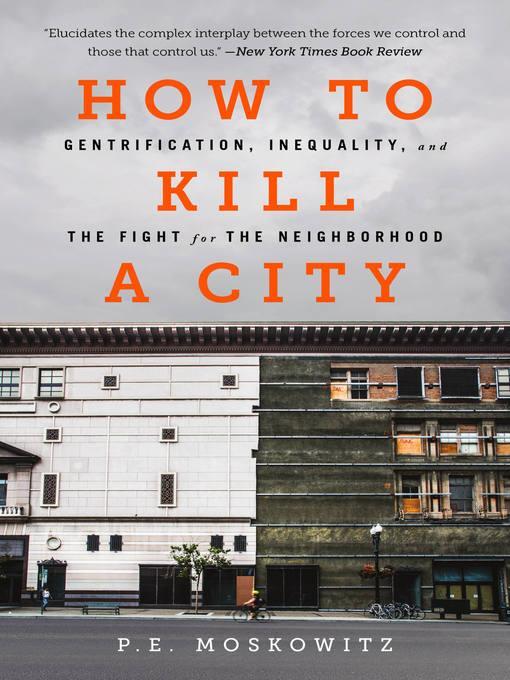
How to Kill a City
Gentrification, Inequality, and the Fight for the Neighborhood
کتاب های مرتبط
- اطلاعات
- نقد و بررسی
- دیدگاه کاربران
نقد و بررسی

December 12, 2016
Journalist Moskowitz’s first book is ambitious but also cluttered and lacking in depth. The book begins by suggesting that gentrification is a misunderstood buzzword. Moskowitz discusses the stages cities go through before gentrification is complete, beginning with policy and planning long before the coffee shops and art galleries show up. Examining the phenomenon through four cities (Detroit, New Orleans, New York, and San Francisco) should broaden the scope of the book, but the chapters are too brief and none of the cities is afforded enough time. Moskowitz asserts that current urban planning trends don’t favor residents, noting how the populations of two radically transformed cities, Detroit and New Orleans, have declined. The book has too many threads that are not given enough room to unspool, such as the reverse “white flight” back into cities. There are many compelling beginnings. but the book reads like a summary; it’s a retread of information for knowledgeable readers and a superficial introduction for novices.

December 15, 2016
A freelance journalist reveals the many evils of gentrification. Moskowitz, a former staff writer for Al Jazeera America, pulls no punches in his depiction of gentrification as "a void in a neighborhood, in a city, in a culture...a trauma, one caused by the influx of massive amounts of capital into a city and the consequent destruction following in its wake." The author takes as his examples the cities of New Orleans, Detroit, San Francisco, and New York, places where he sees gentrification not as a product of cultural and consumer choices but as the result of specific policies by politicians, urban planners, real estate firms, and heads of corporations. These policies are often unfavorable to the poor, benefitting the accumulation of capital by the rich. In New Orleans, writes Moskowitz, Hurricane Katrina gave politicians the opportunity to re-create it as a whiter, richer city, as did the near-bankruptcy of New York City and the bankruptcy of Detroit--at least in its downtown and midtown areas. In San Francisco, the author describes the rapidly rising rents that are forcing working-class people out as the mayor courts technology firms to come in. Moskowitz chronicles his visits to each city, telling the stories of individuals affected by gentrification and in some cases fighting against it. New York is a special case, for there, his home city, the author sees himself as both a gentrifier in his changing Brooklyn neighborhood and as a victim of the earlier gentrification of the West Village, where he grew up. In the final chapter, Moskowitz draws on the work of academics and activists to present a list of six tactics for resisting gentrification, but ultimately, he asserts, there will be no solution without much greater economic and racial equality. A harsh critic of the forces changing urban life paints a vivid and grim picture of the future of American cities.
COPYRIGHT(2016) Kirkus Reviews, ALL RIGHTS RESERVED.

February 1, 2017
Journalist Moskowitz visits four gentrifying American cities, where revitalization and displacement go hand in hand. Real estate developers buy old apartments and local businesses, city managers deal out rezoning and tax incentives to outsiders, and trendy millennials flock to San Francisco, New Orleans, New York, Detroit, and other gentrifying downtowns. Gentrification causes rents to skyrocket and locals--mostly low-income residents--to be displaced to the suburbs. Moskowitz exposes gentrification as systemic violence against low-income minorities that is rooted in historical inequalities and spearheaded by paternalistic developers and city officials who insist that displacement is the price of progress. The upshot is a "new geography of inequality." Moskowitz laments the decline of gritty urban communities and cultures, as well as the rise of inner cities that he characterizes as bland, affluent, and hipsteresque. He also touches on the growing global phenomenon in cities such as Berlin and London. This is a valuable entry text for deeper analyses found in Matthew Desmond's Evicted and Neil Smith's The New Urban Frontier. VERDICT A forceful critique of gentrification and its impact on disempowered members of American society. Relevant to anyone who values diverse cityscapes and socioeconomic justice.--Michael Rodriguez, Univ. of Connecticut
Copyright 2017 Library Journal, LLC Used with permission.

























دیدگاه کاربران